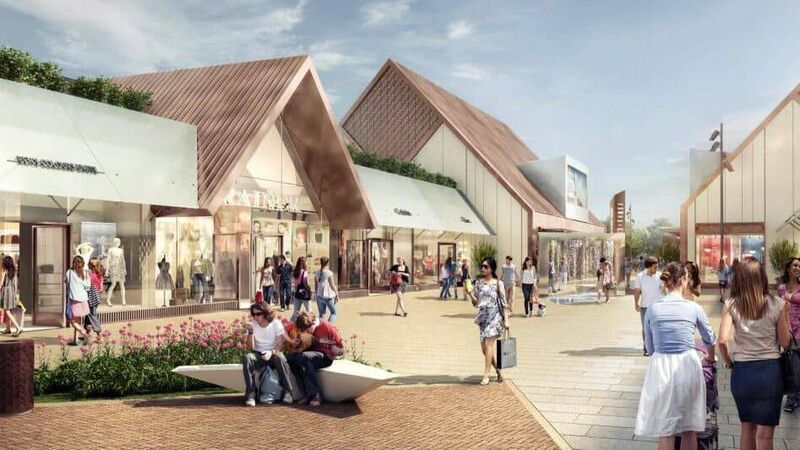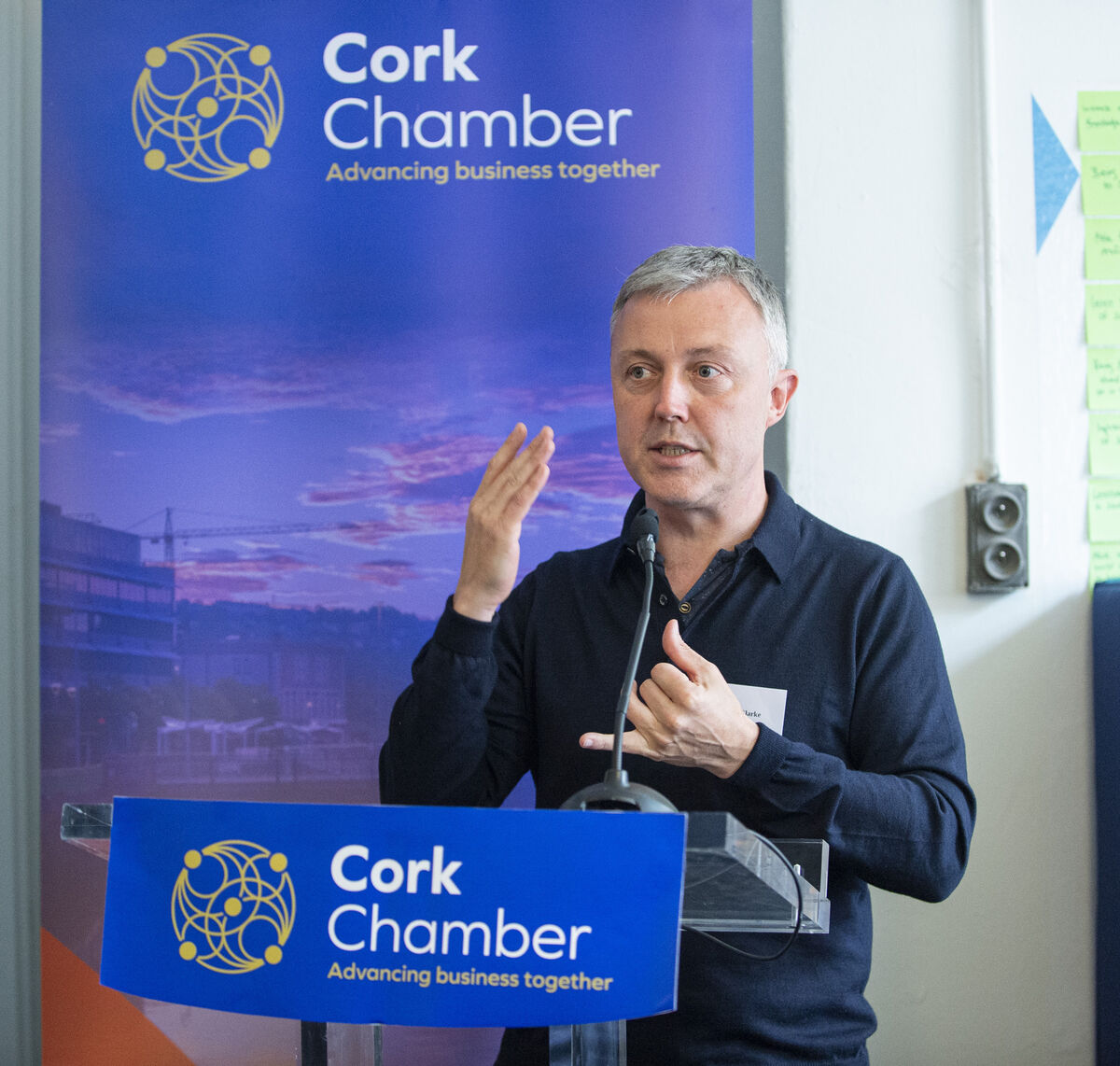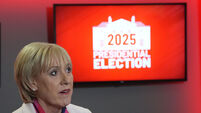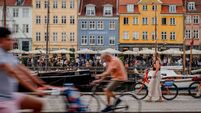Catherine Conlon: In a climate emergency, do we need a monument to economic growth in East Cork?

An artist's impression of the Carrigtwohill 'Kildare Village' style retail outlet, plans for which are to be relaunched, a sign of the business-as-usual approach to maintaining economic growth targets that do not factor in impact on carbon emissions.
Plans for a major retail village worth over €100m for East Cork are to be relaunched by the British company proposing the scheme.
Giles Membrey, managing director of Rioja Estates, has suggested that the scheme will be fantastic for the Cork area in terms of tourism, the cruise terminal and other attractions in the area. "We will have very little impact on Cork city centre, given the brands we have and the catchment profile."
But is that good enough? Surely, the ambition should be to support retail investment within the city centre that will energise local trade and the vibrancy of a sustainable city. Shane Clarke, director of operations for the Victorian Quarter business group in Cork city agrees, suggesting that the plans are "unsustainable for lots of reasons."
"The future of Cork city is in its historic core, and that’s where the investment should happen and should be directed," said Mr Clarke. "We are in a climate crisis and biodiversity emergency. This project is 1980s thinking in a changed 21st-century world.
"This is not a village, it’s an out-of-town shopping centre. We have evidence from cities across the world that such retail suck spend and investment out of our historic town centres. Jobs created here are lost in Cork city, Midleton and Cobh."
Mr Clarke also questioned the massive volumes of traffic congestion, air pollution and noise with the need for taxpayers to subsidise the expansion and maintenance of the multi-billion euro road network. The plans predict 220,000 shoppers a year. Has the carbon footprint of these shoppers been considered as well as the impact on already-challenging climate targets?

The announcement follows in the wake of the recent controversial address to TASC, the independent think tank addressing equality, democracy social inclusion and climate justice, by President Michael D Higgins. The President provoked criticism from members of the economic fraternity when he said that "a fixation on a narrowly defined efficiency, productivity and perpetual growth has resulted in a discipline that has become blinkered to the ecological challenge – the ecological catastrophe- we now face."
The European Economic Agency (EEA) in a recent paper ‘Growth without Economic Growth’ warned that human civilisation is currently "profoundly unsustainable" and drastic changes are now essential if disaster is to be averted.
The plans come at the same time as a warning that multiple climate tipping points could be crossed. Once temperatures have risen by 1.5-2C, German climatologist, Professor Stefan Rahmstorf, of Potstam University warned that will likely lead to a ‘domino effect’ with catastrophic consequences.
The critical systems most vulnerable to collapse in the near term include the Antarctic Ice Sheet, adding three metres to global sea levels, as well as the Amazon rainforest, the world’s coral reefs, the Greenland ice sheet, and the already weakening Atlantic Meridional Overturning Current that allows Ireland and much of north western Europe to enjoy its mild and temperate climate.
As we blithely plan more monuments to excess and economic growth, Professor Rahmstorf urges policy makers to start putting climate change at the top of their agendas. "They cannot be allowed to be pushed off the agenda by other short-term priorities. This is an extremely urgent situation."
Despite ambitious national climate plans and targets, that urgency is simply not evident in the day-to-day, business-as-usual approach to maintaining economic growth targets that do not factor in impact on carbon emissions.
An alternative approach to sustainable urban planning is the concept of a 15-minute city, where life’s amenities are concentrated in a 15-minute walk — the suggestion being that the closer that residents are facilitated to live to workplaces, shops, schools and other amenities, the better their quality of life will be.
This concept is a familiar to anyone who has enjoyed strolling around the historic centres of European towns and villages and was the status quo on the bustling main streets in the US before the post-war sprawl of Interstate highways permanently altered the dynamic. It's probably familiar too, to a lot of people who grew up in rural villages and towns here, before the era of commuter jobs in cities a distance away.
The covid-19 pandemic forced towns and cities to limit their environs to within 5kms and even 2kms. Adjusting to that new reality, proponents of 15-minute cities recognise the advantages for both residents and the environment as reliance on cars is reduced.
Anne Hidalgo, mayor of Paris has been one of the strongest proponents of the 15-minute city, making it a centrepiece of a successful re-election campaign in 2020. Carlos Moreno, French academic and advisor to Hidalgo, in a TED Talk in 2020, suggested there were three key features to a 15-minute city.
He said: "First, the rhythm of the city should follow humans, not cars. Second, each square metre should serve many different purposes. Finally, neighbourhoods should be designed so that we can live, work and thrive in them without having to constantly commute elsewhere."
Senior Strategic Policy and Development Officer in the Strategic Planning and Economic Development Directorate of Cork City, Paul McGuirk, recently suggested that if we want to inspire people we need to be able to tell a story of opportunity and improvement in our lives.
"There is a need to include in the conversation the benefits for communities and individuals of effective climate action. Solutions to the climate emergency can make more liveable, healthier and better cities for everyone.
"Who wouldn’t chose to live in a city with good public transport, excellent walking facilities and better air quality? Community action is at the heart of how we make Cork a more liveable and sustainable city," Mr McGuirk said, adding that Cork is fortunate to have a strong network of communities and neighbourhoods.
"Understandably, many of us may be daunted by the scale of change involved in transforming how we live, work and move about Cork city but I think we all have to agree that the ultimate destination of a more liveable and sustainable city will deliver quality of life for us all and for generations to come."
Last year, Cork city was selected by the European Commission as one of the first 100 cities to lead on climate neutrality as part of the EU Cities Mission. This selection will support the city in accelerating its vision to meet ambitious growth targets within a sustainable and climate action framework.
The City Development Plan 2022-2028 sets a framework to achieve the core principles of sustainable development, health, compact growth and the creation of liveable communities, amenities, services and green spaces. A key emphasis in the plan is on compact growth that is focused on supporting housing, job creation, public realm renewal, transport, amenity services and community services.
The ambitious plan includes a vision of integration of land-use and transport planning to achieve compact growth, thereby facilitating the ‘15-minute city.’ Building yet another monument to incentivise consumerism and splashing out on expensive designer goods is the opposite of what is needed for Cork city in a time of climate emergency.
- Dr Catherine Conlon is a public health doctor in Cork and former director of human health and nutrition, safefood.
CLIMATE & SUSTAINABILITY HUB





